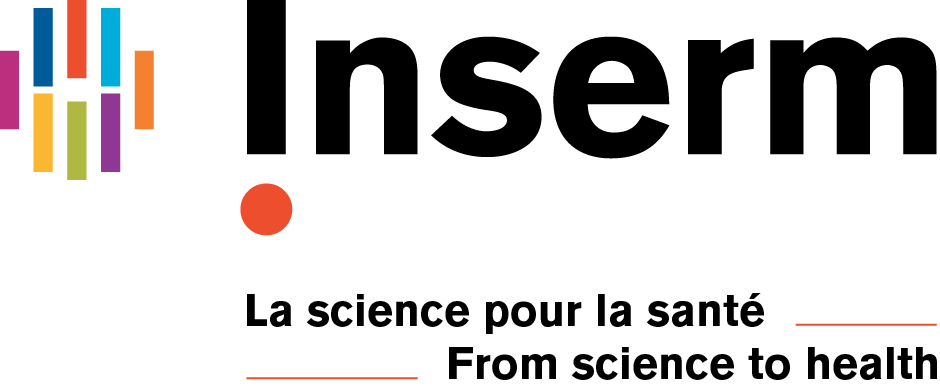Study of the placental CD146 as a biomarker of cerebral angiogenesis troubles following an in utero alcohol exposure
Etude du CD146 placentaire comme biomarqueur de troubles de l'angiogenèse cérébrale suite à une alcoolisation in utero.
Résumé
Fetal Alcohol Syndrome (FAS) refers to the most severe expression of Fetal Alcohol Spectrum Disorder (FASD). It associates several clinical defects such as craniofacial dysmorphism, growth retardation and neurological/behavioral disabilities. However, due to the absence of obvious dysmorphic features, most children with FASD are late or misdiagnosed. Nevertheless, these infants are not devoid of neurodevelopmental impairments and neurobehavioral troubles that will progressively appear with age. Consequently, the challenge for clinicians consists in the early diagnosis of FASD to avoid the loss of precious years of care. Even if several biomarkers of alcohol exposure have been characterized, there are currently no biomarkers of brain defects. Recent data from the Laboratory have shown a functional link “Placenta-Brain” involved in the control of the fetal cortical angiogenesis. Thus, PlGF has been identified as a first placental biomarker of brain impairments, and a valorization process has been initiated. My thesis project consisted to research if another placental proangiogenic factor associated to the VEGF/PlGF signalosome could also be an actor of the Placenta-Brain dysfunction induced by in utero alcohol exposure. Moreover, a non-oriented trans-organ transcriptomic approach has also been initiated trying to broaden the “angiogenic” signature of the alcohol-induced deleterious effects on the placenta-brain axis. About the CD146 study, data obtained on villous extracts from human placentas showed that the expression profile of mRNA didn’t changed between gestational weeks. However, Western blot analyses showed a marked increase of the expression of the membrane form (mCD146) with term and the soluble form sCD146 was clearly detected. In mouse, the mRNA and protein expression profiles in the placenta were very similar to those characterized in human. Immunohistochemistry indicated that the CD146 expression is at least endothelial. Moreover, results obtained by ELISA indicated that the sCD146 is detected in the fetal cephalic blood. In the mouse brain, the expression of CD146 was much less expressed than in the placenta and mCD146 is the main form. In utero alcohol exposure disrupted the expression of sCD146 decreasing in the placenta and increasing in the fetal brain. Additionally, several members of the CD146 signalosome were inversely impacted by alcohol between the placenta and the fetal brain. Finally, the placental repression of CD146 by in utero electroporation of CD146 CRISPR-Cas9 plasmids resulted in a disorganization of the microvascular cortical network, similar to the one observed after an in utero alcohol exposure. In addition to the first study focused on CD146, a non-oriented transcriptomic approach was undertaken to investigate the effects of alcohol on the placenta-brain interactions. Results indicated that in utero alcohol exposure have quantitatively a little impact on the “Placenta-Brain” transcriptomic signature. Nevertheless, alcohol exposure induced specific dysregulations of genes representative of the placenta/brain axis and a qualitative GO analysis using the “angiogenesis” filter allowed us to identify a list of genes significantly impaired. A validation step is now planned. To conclude, the targeted approach done on CD146 supports the existence of a functional placenta-fetal brain interaction and involved in the control of angiogenesis. The CD146 could constitute another placental biomarker of brain development defects induced by in utero alcohol exposure. Moreover, the transcriptomic approach has provided promising data regarding angiogenesis dysfunction and neurodevelopmental troubles and it would contribute to the characterization of a transcriptomic signature for the early diagnosis of FASD.
Le Syndrome d’Alcoolisation Foetale (SAF) est l’atteinte la plus sévère des Troubles Causés par l’Alcoolisation Foetale (TCAF). Il se traduit, chez l’enfant, par une triade de manifestations cliniques (dysmorphies craniofaciales, retard de croissance pré et postnatal, troubles neurologiques et comportementaux). Toutefois, en raison de l’absence d’anomalies morphologiques évidentes, la plupart des enfants TCAF échappent à un diagnostic précoce. Pour autant, ces enfants ne sont pas dépourvus d’atteintes cérébrales et les conséquences neurodéveloppementales et comportementales se révèleront progressivement avec l’âge. Le défi, pour les cliniciens, consiste donc à diagnostiquer au plus tôt ces enfants TCAF afin de mettre en place un accompagnement adapté à une période (0-5 ans) où le potentiel de récupération est important. A ce jour, même s’il existe des biomarqueurs d’exposition à l’alcool, ces derniers ne permettent pas de déterminer s’il y a eu une atteinte cérébrale. De récents travaux menés au Laboratoire ont mis en évidence l’existence d’un lien fonctionnel « Placenta-Cerveau » impliqué dans le contrôle de l’angiogenèse corticale du foetus. Ainsi, le PlGF a été identifié comme un premier biomarqueur placentaire d’atteinte cérébrale et une procédure de valorisation a été engagée. Mon projet de thèse a consisté à rechercher si un autre facteur pro-angiogénique placentaire associé au signalosome du PlGF/VEGF, le CD146, pouvait également constituer un acteur de la dysfonction Placenta-Cerveau suite à l’exposition in utero à l’alcool. De plus, une approche sans a priori par analyse transcriptomique inter-organes a également été initiée pour tenter d’élargir la signature « angiogénique » des effets délétères de l’alcool sur la communication entre ces deux organes. Concernant l’étude sur le CD146, les données obtenues sur des extraits de villosités de placenta humain montrent que le profil d’expression des ARNm codant le CD146 ne varie pas à différents stades gestationnels. En revanche, l’étude du profil protéique par la technique de Western blot indique une augmentation marquée de l’expression de la forme membranaire du CD146 avec le terme, et la forme soluble du CD146 est clairement détectée. Chez la Souris, les profils d’expression ARNm et protéique au niveau placentaire sont comparables à ceux caractérisés chez l’humain. L’immunohistochimie indique que l’expression du CD146 est endothéliale. De plus, les résultats obtenus par une approche ELISA indiquent que le sCD146 est détecté dans le sang céphalique foetal. Dans le cerveau, le CD146 est beaucoup moins exprimé que dans le placenta, et la forme membranaire est majoritaire. L’alcoolisation in utero perturbe les expressions placentaire et cérébrale de la forme soluble de CD146 en la diminuant fortement dans le placenta et en l’augmentant dans le cerveau foetal. De plus, certains éléments du signalosome du CD146 ont une expression qui est inversement altérée entre le placenta et le cerveau. Enfin, la répression placentaire du CD146 par l’électroporation de CRISPR-Cas9 entraîne une désorganisation du réseau microvasculaire cortical comparable à celle observée suite à une exposition in utero à l’alcool. En complément de l’étude ciblée sur le CD146, une étude sans a priori a été menée par analyse transcriptomique. Les résultats indiquent que l’alcoolisation in utero affecte peu, quantitativement, la signature transcriptomique « Placenta-Cerveau ». Toutefois, l’alcoolisation se traduit par l’émergence de populations géniques qui sont soit spécifiquement présentes dans le groupe « Contrôle » ou dans le groupe « Alcool ». Une analyse qualitative GO orientée « Angiogenèse » a permis d’identifier une liste de gènes dont le profil d’expression « Placenta-Cerveau » est significativement impactée par l’alcool. Une étape de validation de certains de ces gènes va être engagée
| Origine | Version validée par le jury (STAR) |
|---|

